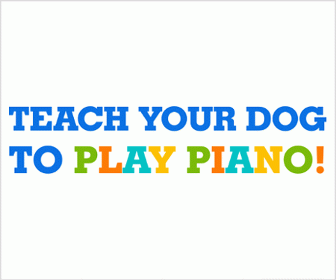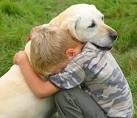How to Establish Healthy Relationships Between Children and Dogs


Fearlessness: that is the typical characteristic of children when they are born. Why? Because the concept of fear is still not present in them. They came to this world to learn and that process has not begun yet.
Some children are even born in water and some are taken into a pool by their parents even before they can crawl. What happens? They move in it as freely as anyone accustomed to being in it. The truth is they have been in a liquid during all their formative period, so water being another liquid is quite familiar to them and they don’t fear it.
What happens then when other types of parents take their children either to pools or to the ocean for the first time, for example? I have seen children that try immediately to go into the water because they associate it with pleasure but are right away warned by those parents, especially moms: “don’t go in, so and so, you may drown!” or “don’t, something might hurt you there!”,etc. Oftentimes what they do is put on life jackets before the child even touches the water, no matter if it is only one foot deep. What they are doing is creating the sense of fear, instead of helping the child feel comfortable and secure by learning how to swim
What does all this have to do with children and dogs establishing a healthy relationship? I am basing myself here on the same concept of fear that parents instill in their children about animals when still very small. Those are the same parents that warn the child not to get close to dogs, “because they might bite you” or “because you don’t know if they are sick” or “you don’t know what they might do to you” Is any of this healthy? Children may want to approach the dog in a very natural and spontaneous way and the dog, most likely, will do the same. They are both curious of each other…..nothing else.
We are not going to deny here that there have been exceptions to the rule. That would be ridiculous. Those are there, and even if not what we want, they need to be studied and considered and also used to bring the correct information to the children in their relationship to dogs. What we are trying to emphasize is that helping the child by teaching him or her to learn about dogs, about the differences, about their behavior and what fantastic and beautiful moments they might bring into their lives is much more important than instilling fear or rejection in them. It has also been studied and demonstrated that children that are cruel to animals are usually cruel to other human beings later on in life. Is that something sensible and responsible parents would wish for their children?
If we look at the relationships between children and dogs throughout history, we will notice the stories of loyalty, companionship, protection and love certainly surpass the negative ones by quite a lot.
Becoming an expert in the field of dogs is not what we are talking about here. If the child wants to, perfectly fine, but the important thing is for parents to learn first about those relationships between children and dogs before they make the terrible mistake of assuming without knowing and creating an unnecessary and very damaging fear or rejection that should not have been there to begin with. Teaching precaution is not the same as teaching fear or rejection. We know what that has also meant to some humans all over the world. There are innumerable sources of information accessible from which anyone can learn. These are there with a purpose: to benefit those who use them, and that is precisely what will help these users when trying to deal correctly to create a healthy relationship between children and dogs.
Basic conditioning psychological principles are used all the time to obtain the wanted behavior in dogs. The same apply to children when very young. Using these principles is of extreme help also when creating a healthy relationship between children and dogs. What is correct should be positively reinforced. What is not, should receive a negative one. Of course, this conditioning is not enough. As I mentioned before, learning the whys and wherefores is much more important, because that child will establish the healthy and correct base from there and grow on it for a better future understanding of what a healthy relationship between children and dogs may mean to the rest of his or her life.
